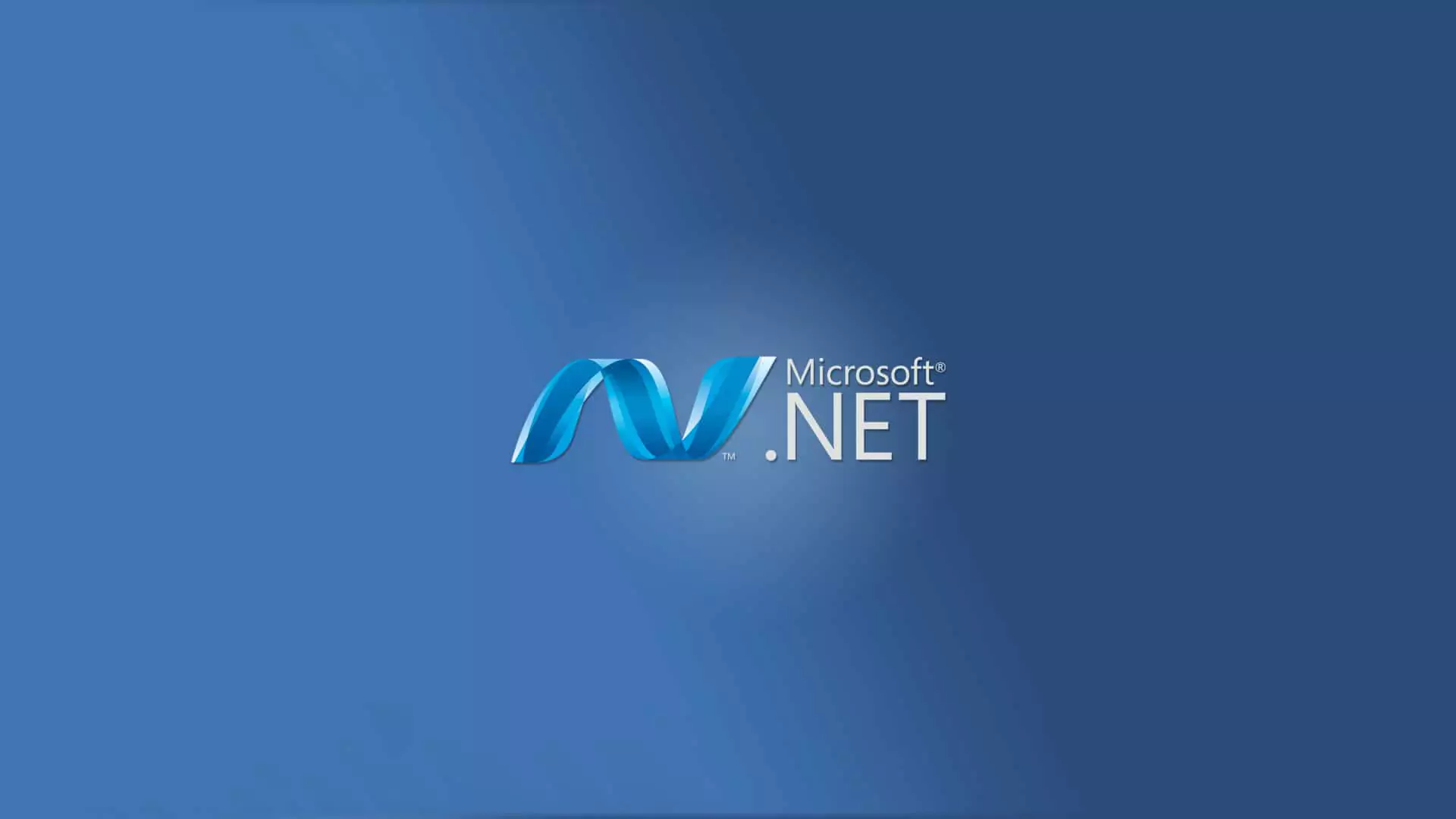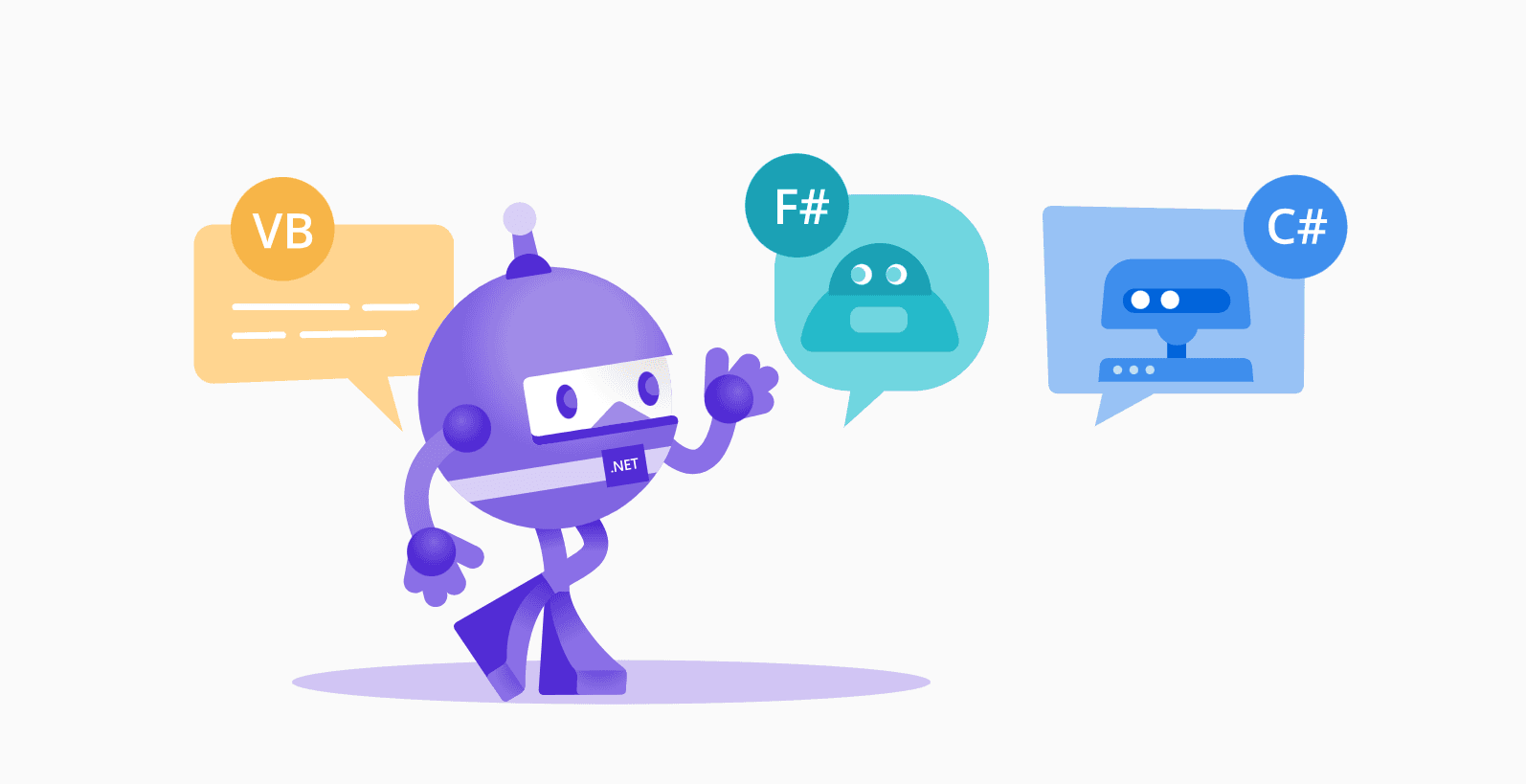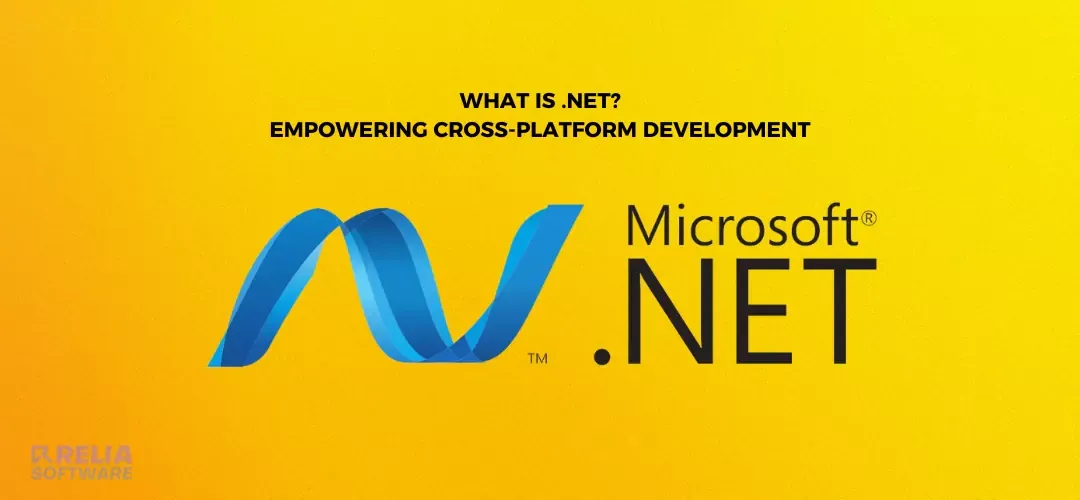In the ever-evolving world of software development, staying ahead of the curve is crucial for success. One technology that has been transforming the landscape of application development is .NET. Developed by Microsoft, .NET is a powerful framework that provides developers with a rich set of tools and libraries to build robust and scalable applications for various platforms. This blog post will dive into the world of .NET, exploring its core concepts, components, key benefits, diverse use cases, and how to get started with this powerful development platform.
>> Read more: Top 10+ Best .NET Development Companies
What is .NET?
.NET is a free, open-source, and cross-platform developer platform created by Microsoft. It enables developers to build a wide range of applications.
.NET stands out with its cross-platform compatibility, allowing you to develop applications that seamlessly run on Windows, macOS, Linux, and even web browsers. This flexibility, coupled with its rich ecosystem of libraries and frameworks, makes .NET a compelling choice for developers of all levels.
Whether you're a seasoned developer looking to increase your skillset or a newbie trying out programming, .NET offers a comprehensive and accessible platform to fuel your creativity and bring your innovative ideas to fruition.

The Evolution Process of .NET
Here is a brief overview of the evolution of .NET:
Early days (1990s)
- Microsoft started developing a platform called Next Generation Windows Services (NGWS) with the vision of creating a unified development environment for building distributed applications.
2000s
- In 2002, .NET Framework 1.0 was launched, marking the official introduction of .NET.
- Subsequent versions of .NET Framework were released, introducing new features and improvements.
- ASP.NET, a popular web development framework, became a core component of .NET Framework.
2010s
- With the rise of mobile and cloud computing, Microsoft recognized the need for a more lightweight and cross-platform version of .NET.
- In 2016, .NET Core 1.0 was released, offering a modular and open-source foundation for building modern applications.
- .NET Core gained significant traction due to its focus on cross-platform compatibility, cloud adoption, and faster release cycles.
2020s
- In 2020, .NET 5 was released, marking a significant evolution by unifying .NET Framework and .NET Core into a single, modular platform.
- .NET 6 and .NET 7 followed, further enhancing performance, adding new features, and continuing the focus on open-source development and cross-platform capabilities.
Key Takeaways
- .NET Framework, initially focused on Windows development, paved the way for modern .NET versions.
- .NET Core and subsequent iterations (like .NET 6 and 7) emphasize open-source principles, cross-platform compatibility, and cloud-native development, making .NET a relevant and competitive platform for modern developers.
What is the Difference Between .NET Framework And .NET Core?
Here is a table summarizing the key differences:
| Feature | .NET Framework | .NET Core |
| Platform Compatibility | Windows Only | Windows, macOS, Linux, Web |
| Architecture | Monolithic | Modular |
| Focus & Use Cases | Desktop Apps, Web | Modern Apps (Web, Cloud, Mobile) |
| Development Experience | Primarily Visual Studio | More IDE options (VS, VSCode) |
| Release & Update Cycle | Slower, Longer Support | Faster, Regular Updates (LTS options) |
Platform Compatibility:
- .NET Framework: Primarily targets the Windows operating system only. While there were efforts to make it cross-platform through tools like Mono, they weren't widely adopted.
- .NET Core: Designed to be cross-platform, allowing development and deployment of applications on Windows, macOS, Linux, and web browsers. This flexibility makes .NET Core a more versatile choice for modern development needs.
Architecture and Design:
- NET Framework: A monolithic platform with all core libraries and components tightly integrated within a single package. This approach can make it larger and less modular, requiring developers to include the entire framework even if they only need specific functionalities.
- .NET Core: Employs a modular design with a smaller core and separate, smaller libraries for specific functionalities. This modularity allows developers to choose only the components they need, resulting in smaller and more lightweight applications with a smaller footprint.
Focus and Use Cases:
- .NET Framework: Primarily focused on developing desktop applications and leveraging the features of the Windows operating system. It also supports web development with ASP.NET Framework.
- .NET Core: A broader focus on modern application development, encompassing web applications, microservices, mobile apps (through Xamarin), and more. It is suitable for building modern applications that can run on various platforms and easily integrate with cloud services.
Development Experience:
- .NET Framework: Primarily uses Visual Studio as the Integrated Development Environment (IDE).
- .NET Core: While offering good integration with Visual Studio, it also supports various other IDEs like Visual Studio Code, making it more flexible for developers with varying preferences.
Release and Update Cycle:
- .NET Framework: Follows a slower release cycle with longer support periods for long-term stability, making it suitable for legacy applications that require stability and compatibility with existing systems. Microsoft is still actively providing security updates for .NET Framework, but is no longer introducing new features.
- .NET Core: Releases more frequent updates with new features and improvements, aligning with the faster-paced nature of modern application development. Microsoft provides Long-Term Support (LTS) versions for specific .NET releases, offering extended support alongside regular updates.
.NET Framework VS .NET Core: What to Choose?
- .NET Core is the preferred choice if you're developing a new application and prioritize cross-platform compatibility, cloud integration, and modern development practices.
- .NET Framework is the preferred choice if you're maintaining or extending an existing desktop application built with .NET Framework. Sticking with it might be more practical due to existing codebase and long-term support options.
Remember, this is a general overview, and there might be specific scenarios where either option might be more suitable based on your particular needs and considerations.
.NET Components
.NET, though not technically a single "component" itself, consists of several key components that work together to provide a comprehensive development environment. Here are the main components of .NET:
Common Language Runtime (CLR)
CLR is the execution engine responsible for managing the execution of code written in various .NET-compatible programming languages (.NET supports over 60 languages, not just C#!).
CLR handles tasks like:
- Memory Management: Allocates and deallocates memory as needed by the application.
- Security: Enforces security measures to protect the system and applications.
- Thread Management: Manages the creation, scheduling, and synchronization of threads within the application.
- Exception Handling: Deals with errors and exceptions that may occur during program execution.
.NET Framework Class Library (FCL)
FCL is a collection of pre-written classes and functionalities that developers can leverage in their applications.
FCL provides foundational building blocks for common tasks like:
- File and database access;
- Networking;
- Text processing;
- Security;
- User interface development;
- etc.
.NET SDK
.NET SDK is a set of tools and libraries used for building, testing, debugging, and deploying .NET applications. It Includes:
- Compilers: Translate code written in various languages into machine code that the computer can understand.
- Debuggers: Tools for identifying and troubleshooting errors in code.
- NuGet Package Manager: Facilitates discovering, installing, and managing external libraries and dependencies.
- Additional Components
- ASP.NET: A popular framework for building web applications using .NET.
- Xamarin: A framework for developing cross-platform mobile applications using C#.
- Entity Framework: An object-relational mapper (ORM) that simplifies working with databases in .NET applications.
It's important to note that not all implementations of .NET include all these components. For example, .NET Core (a more lightweight version of .NET) doesn't include the FCL by default, but it can be added through NuGet packages.
Understanding these key components provides a basic foundation for comprehending how .NET functions and the various tools it offers for developers.
Use Cases of .NET
.NET, encompassing .NET Core, .NET 6, and .NET 7, offers a versatile platform for building a wide range of applications across various domains. Here are some prominent use cases highlighting its capabilities:
Web Applications
- Enterprise-Level Web Applications: .NET excels in building complex, scalable, and secure web applications with robust features like user management, authentication, and data access. It integrates seamlessly with popular web frameworks like ASP.NET Core MVC and ASP.NET Core Razor Pages.
- E-commerce Platforms: Many online stores leverage .NET due to its ability to handle secure payment processing, shopping cart functionality, and user management, ensuring a smooth and reliable online shopping experience.
- Content Management Systems (CMS): Several popular CMS platforms, including Umbraco and Sitefinity, are built on .NET, allowing for flexible content creation, management, and delivery across various devices.
Desktop Applications
- Custom Business Tools: .NET is well-suited for developing custom desktop applications tailored to specific business needs, such as CRM systems, accounting software, data visualization tools, and point-of-sale (POS) applications.
- Productivity Tools: Enhance your workflow with .NET-built applications for tasks like project management, scheduling, note-taking, and more.
- Mobile Applications
- Cross-Platform Mobile App Development: While not its primary focus, .NET, through frameworks like Xamarin, enables building mobile applications that can run on Android, iOS, and other platforms using a single codebase, reducing development costs and time.
Cloud Applications
- Cloud-Native Microservices: .NET supports the development of microservices, which are small, independent, and modular services that can be easily deployed and scaled on cloud platforms like Microsoft Azure. This approach promotes agility and fault tolerance in cloud applications.
- Serverless Functions: .NET can be used to create serverless functions, which are event-driven pieces of code that execute on-demand in response to specific events without requiring server management. This facilitates building cost-effective and scalable cloud applications.
Machine Learning and Data Science
- Machine Learning Model Development: .NET libraries like ML.NET and TensorFlow.NET empower developers to create and train machine learning models for various tasks, including image recognition, natural language processing, and predictive analytics.
- Data Analysis and Visualization: Develop tools for data analysis, manipulation, and visualization using .NET, enabling data scientists to extract insights from large datasets and communicate findings effectively.
Game Development
- While not as widely used as Unity or Unreal Engine, .NET can be employed for building various types of games, especially those requiring complex logic or simulations.
Other Use Cases
- .NET's versatility extends beyond these listed categories, finding applications in areas like Internet of Things (IoT) development, desktop robotics, and even blockchain technology.
Remember, this is not an exhaustive list, and the possibilities with .NET are constantly evolving. By leveraging its rich ecosystem of libraries, frameworks, and continuous advancements, developers can create innovative and impactful applications across diverse domains.

Benefits and Drawbacks of .NET
Benefits
Cross-Platform Compatibility: .NET (including .NET Core and later versions) offers the ability to develop applications that can run on Windows, macOS, Linux, and web browsers. This flexibility allows developers to target a wider audience and reduces the need to maintain separate codebases for different platforms.
Rich Ecosystem of Libraries and Frameworks: .NET boasts a vast ecosystem of pre-built libraries and frameworks covering various functionalities like web development, data access, machine learning, cloud integration, and more. This extensive library collection allows developers to leverage existing solutions rather than reinventing the wheel, saving time and development effort.
Performance and Security: .NET is known for its efficient runtime environment (CLR) that ensures smooth application performance. Additionally, it prioritizes security by incorporating features like role-based authentication, code access security, and sandboxing mechanisms to protect applications and data.
Large Community and Support: Backed by a large and active developer community, .NET offers extensive resources, tutorials, and forums for support and troubleshooting. Additionally, Microsoft provides comprehensive documentation and various support channels, making it easier for developers to find solutions and assistance.
Open-Source and Continuous Improvement: Microsoft's shift towards open-source development for .NET Core and later versions fosters community collaboration and promotes faster innovation. Regular updates and improvements address emerging technologies and maintain .NET's relevance in the evolving software landscape.
Object-Oriented Programming (OOP): .NET is based on OOP principles, promoting code reusability, modularity, and maintainability. This paradigm allows developers to create well-structured and organized applications that are easier to understand, modify, and extend.
Integration with Microsoft Ecosystem: If you're already invested in the Microsoft ecosystem with tools like Azure or Visual Studio, .NET offers seamless integration, potentially streamlining development workflows.
Drawbacks
Learning Curve: While .NET offers extensive documentation and resources, it still has a learning curve, especially for developers new to the platform or those coming from different programming languages or frameworks.
Performance Overhead: While generally efficient, the .NET runtime can have a slightly larger memory footprint compared to some other lightweight frameworks. This might be a consideration for resource-constrained environments or highly performant applications.
Potential Vendor Lock-in: While .NET is becoming increasingly platform-agnostic, some legacy features or libraries might have a stronger focus on Windows environments. This can lead to potential vendor lock-in concerns in specific scenarios.
Maturity of Certain Features: Compared to some established frameworks in specific domains like web development (e.g., Node.js or Ruby on Rails), some features within .NET might be considered less mature or have a smaller community and resource pool.
Overall, .NET remains a powerful and versatile platform for developing modern applications across various domains. Weighing the benefits and drawbacks against your specific project requirements and team expertise will help you determine if .NET is the right choice for you.
How To Get Started With .NET?
Ready to explore the world of .NET development? Here's a comprehensive roadmap to guide you through the initial steps:
Step 1: Choose Your Learning Path
- Official Microsoft Documentation: This website is the ultimate resource for in-depth knowledge on everything .NET, from fundamental concepts to advanced topics. It offers comprehensive documentation, tutorials, and API references.
- Interactive Tutorials: Platforms like Microsoft Learn, Pluralsight, and Codecademy offer interactive tutorials that combine learning with hands-on experience. These tutorials guide you through coding exercises and challenges, allowing you to learn by doing.
- Online Courses: If you prefer a structured learning experience with video lectures and instructor guidance, consider enrolling in online courses offered by platforms like Coursera, Udemy, or edX. These courses often provide a comprehensive curriculum and personalized learning paths.
Step 2: Install the Essentials
- .NET SDK:
Download and install the latest version from the official Microsoft website, ensuring it aligns with the specific .NET version you plan to use (e.g., .NET 6, .NET 7).
Download Link: https://dotnet.microsoft.com/en-us/download
- Integrated Development Environment (IDE):
While you can use a simple text editor, using an IDE significantly enhances your development experience. Popular options are Visual Studio and Visual Studio Code. Choose an IDE that aligns with your preferences and development needs. Both options offer excellent support for .NET development.
Step 3: Start with a Simple Project
- Begin with a "Hello World" application, which is a classic introductory project in programming. This simple program prints the message "Hello, World!" to the console, providing a basic understanding of the development environment and syntax.
You can find a step-by-step tutorial on creating a "Hello World" application using .NET on the Microsoft website: https://learn.microsoft.com/en-us/dotnet/core/tutorials/with-visual-studio
- Once you're comfortable with the basics, try building a console application that performs simple calculations, takes user input, or interacts with files. This allows you to practice writing code, using variables, conditional statements, and loops.
Explore Microsoft Learn's guided learning paths for building various application types, like web APIs or mobile apps using Xamarin: https://learn.microsoft.com/en-us/dotnet/core/get-started
Step 4: Practice and Experiment
As you progress, challenge yourself with more complex projects that involve different functionalities and utilize various libraries and frameworks within the .NET ecosystem. Some examples include building a simple web application, a desktop application with a user interface, or a mobile app using Xamarin.
Experiment with different functionalities and explore features within the .NET libraries and frameworks. This hands-on exploration helps you solidify your understanding and discover the potential of the platform.
Step 5: Leverage the Community
- The .NET community is vast and supportive. Utilize online forums like Stack Overflow or dedicated .NET forums to seek help, ask questions, and learn from other developers' experiences.
- Engaging with the community fosters connection, provides valuable insights and solutions to challenges, and keeps you updated on the latest advancements within the .NET landscape.
>> Read more:
Conclusion
The .NET framework has revolutionized the world of software development, empowering developers to build robust, scalable, and cross-platform applications. With its powerful runtime, rich libraries, and language interoperability, .NET provides a versatile environment for creating a wide range of applications.
Whether you’re developing web applications with ASP.NET, building mobile apps with Xamarin, or crafting immersive gaming experiences with Unity, .NET offers the tools and capabilities to bring your ideas to life. Embrace the power of .NET and unlock a world of possibilities in the realm of application development.
>>> Follow and Contact Relia Software for more information!
- Mobile App Development
- Web application Development
- development
- coding

